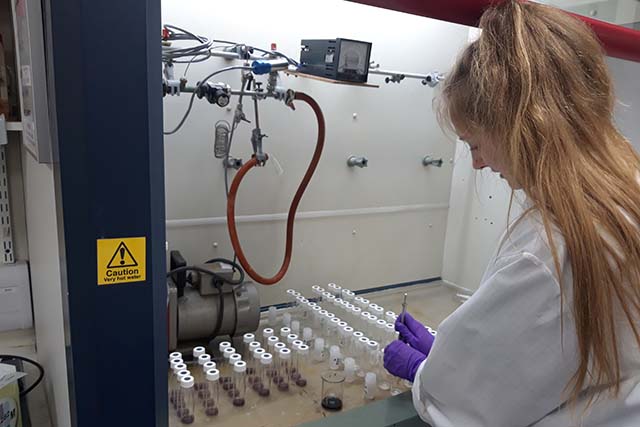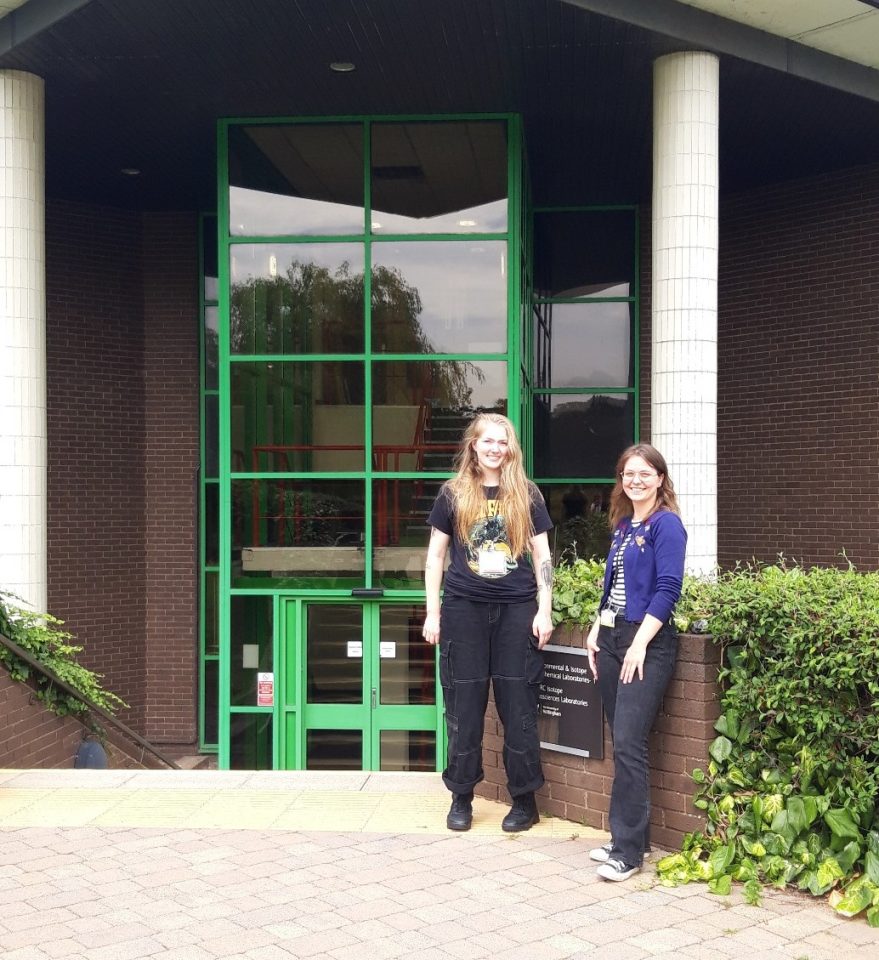Midlands Innovation TALENT placement at BGS
Jodie Brown revisits her time at BGS’s Stable Isotope Facility as part of the Midlands Innovation TALENT project, which aims to increase the status of technicians.
15/08/2023 By BGS Press
In July 2023, I undertook a placement in the Stable Isotope Facility, part of the Centre for Environmental Geochemistry at BGS. This was part of the Midlands Innovation TALENT project, which aims to increase the status of technicians and provide opportunities for training and gaining experience.

Jodie and Kotryna Savickaite (geochemistry technician at the Stable Isotope Facility at BGS) in front of the geochemistry labs at BGS. © Emma Hanson.
As a technician in the School of Geography at the University of Nottingham, I wanted to come to BGS to see their stable isotope facilities, as this is totally different from anything I work on currently. I knew very little about the practical running of mass spectrometers, so it was a great opportunity to broaden my horizons and gain exposure to new techniques.
Working in the Stable Isotope Facility
For two days I worked alongside Carol Arrowsmith, who mainly analyses water samples. She uses isotope ratio mass spectrometry to ascertain the proportion of water molecules containing a heavier isotope of oxygen. This information has many uses, for example reconstructing past climate variations from an ice core, as the isotope ratio is locked into the solid. Carol also works with carbonate samples, which are used to measure isotope ratios of carbon and oxygen. This works by dissolving the solid and analysing the carbon dioxide gas produced.
Carbonate analysis, which is also undertaken by Kotryna Savickaite who I also shadowed, provides information about the temperature of the water at which the carbonate formed. Kotryna works on small quantities of carbonate, such as single shells of foraminifera, which can give a highly detailed climate record along a sediment core, for example.
For two of the other days during my visit I worked in the lab with Andrew Smith, preparing samples for phosphate isotope ratio analysis. Although phosphorus itself only has one stable isotope, the four neighbouring oxygen atoms in a phosphate ion can be used to deduce information about the source of the phosphorus. This is useful in, for example, for tracking pollutants in the environment to determine a source.
I really enjoyed my time at BGS. It was very interesting seeing all the different methods and techniques used in the Stable Isotope Facility and the huge breadth of applications of stable isotope data. Thank you to everyone who hosted me, who were all very kind and welcoming!
The Technician Commitment
BGS is a signatory of the Technician Commitment and will soon be publishing its 24-month action plan. With this, BGS will aim to improve the visibility, recognition, career development and sustainability of technical staff and skills across the institute. BGS staff are also eligible to apply for the Midlands Innovation TALENT placement scheme.


